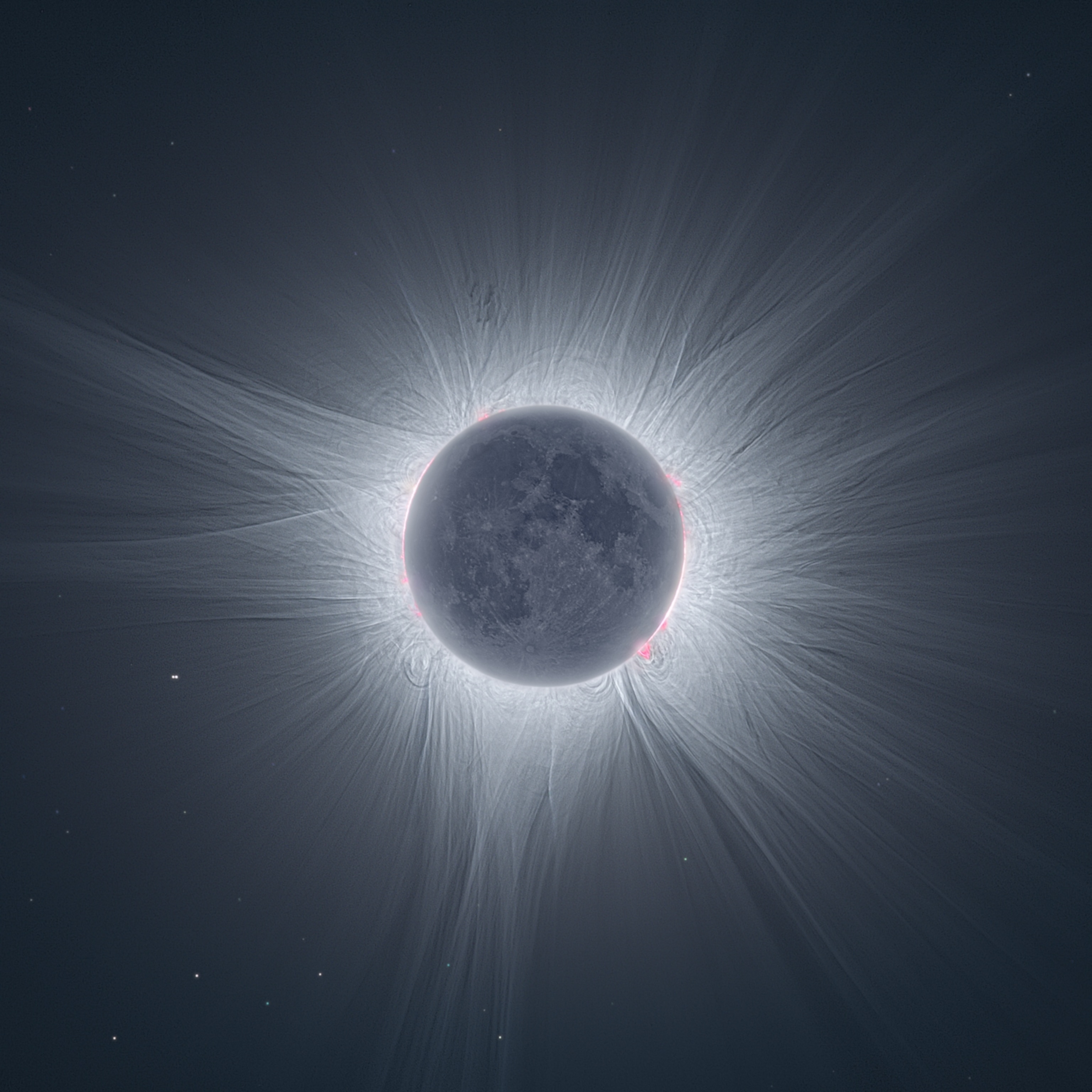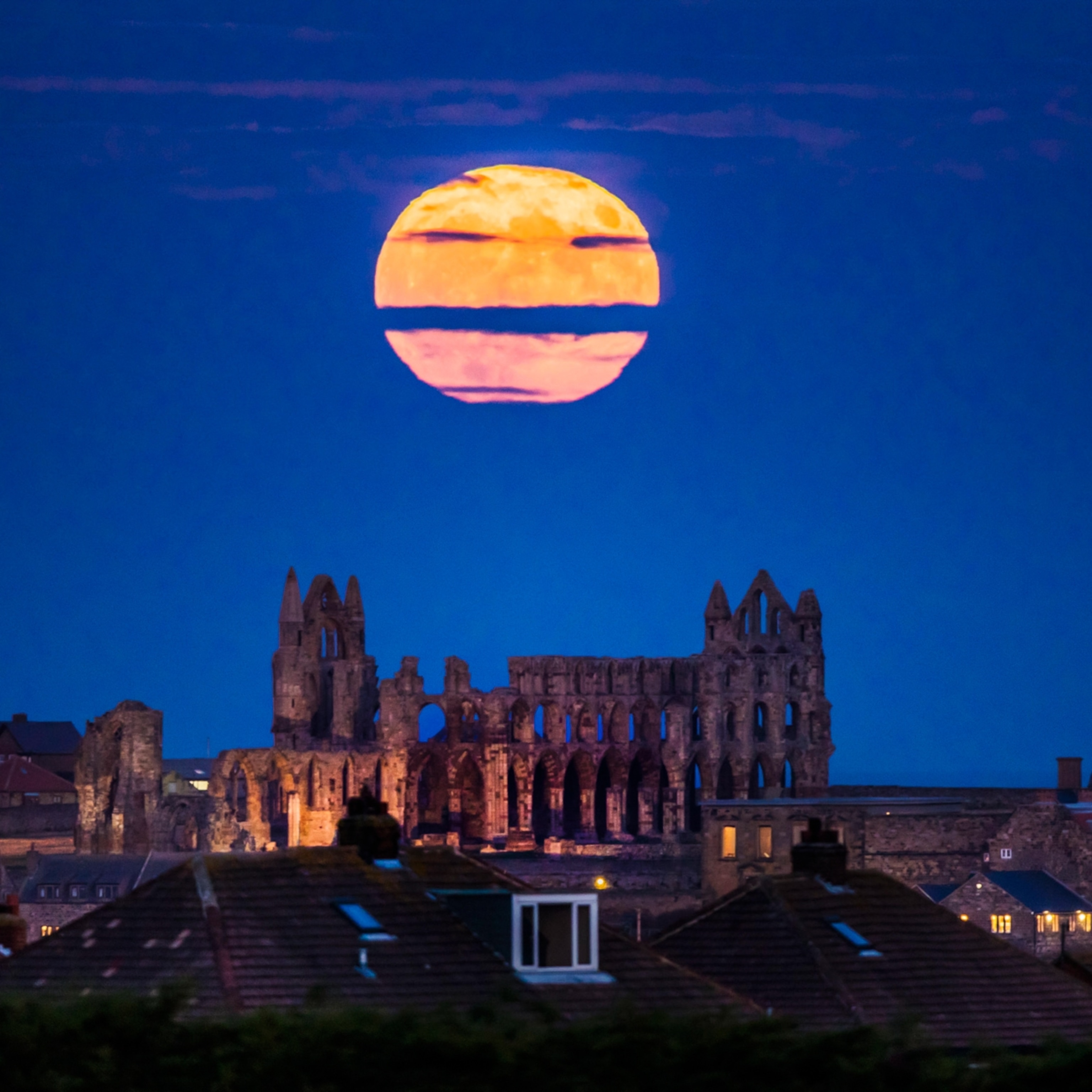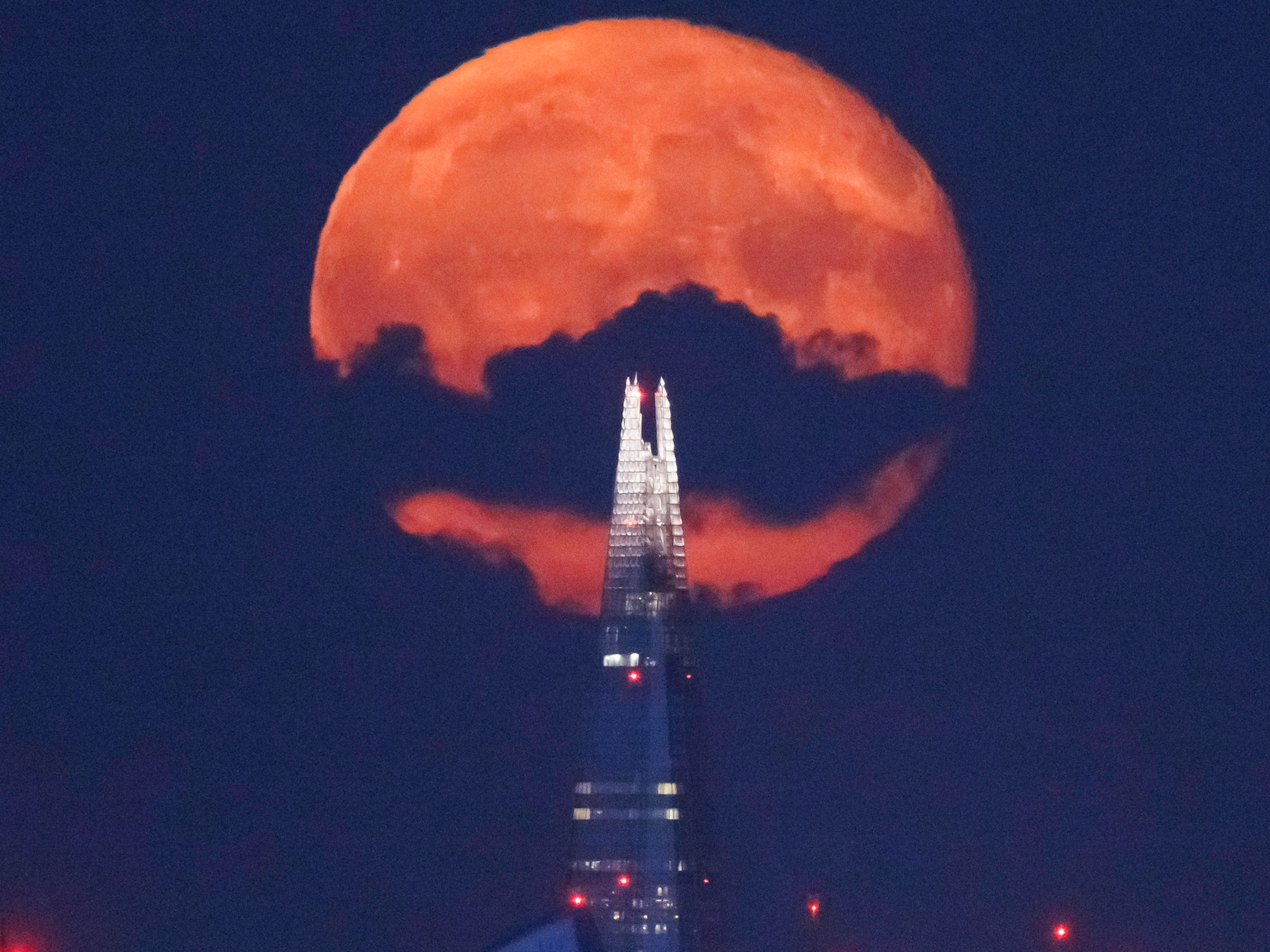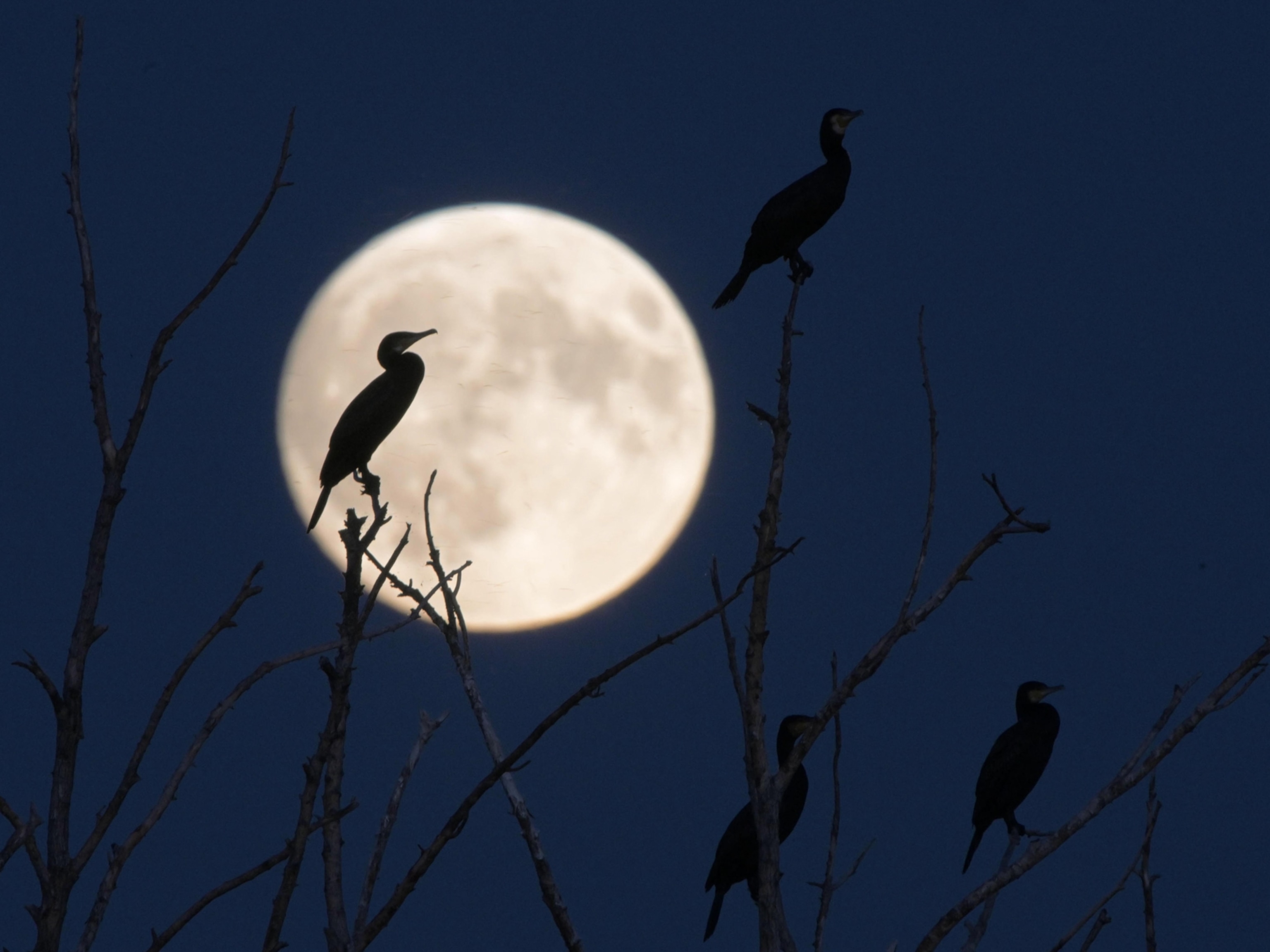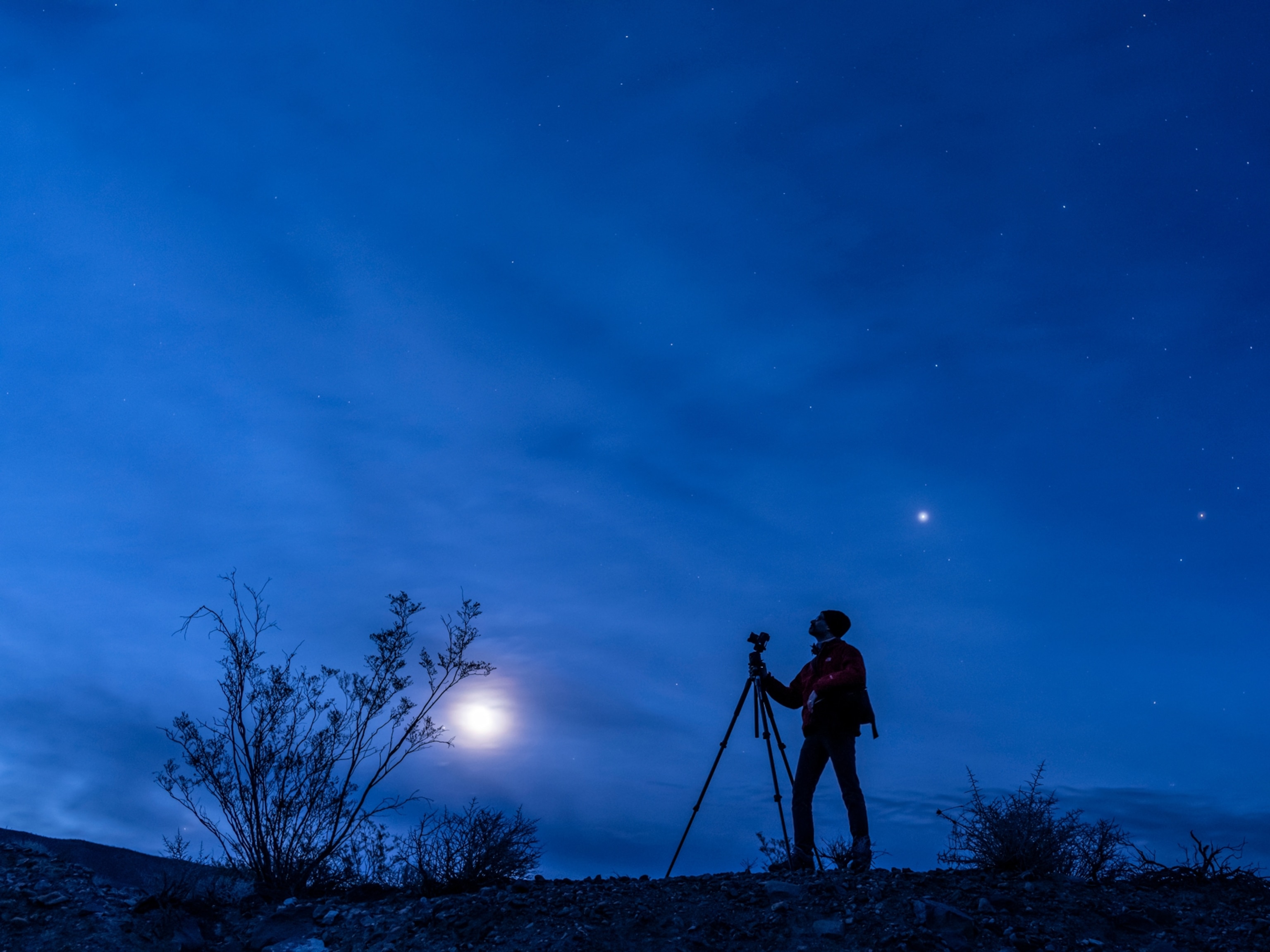
Halloween Sky Guide: 6 Eerie Sights to Haunt Your Night
A deadly giant and a cosmic sea monster are among the treats you can see on October 31.
As all the little ghouls and goblins head into the dark in search of sweets, it’s worth looking up at the night sky this Halloween to catch some spooky stargazing treats.
If you know where and when to look, you can stare down a host of cosmic monsters lurking in the late autumn nights in the Northern Hemisphere.
Here are our picks for some of the creepiest celestial objects that are easy to find with nothing more than your unaided eyes or binoculars—if you dare to look.
Sheer Lunacy
Earth’s sole natural companion, the moon is the largest and brightest object in the night sky, so it’s not surprising that it has been the source of countless scary stories in cultures around the world.
Centuries ago, the Aztec civilization in Mexico and the Maori culture of New Zealand had ominous legends associated with the moon. They believed that it would roam across the sky, stalking hapless individuals wandering out at night and gobbling them up. Cultures around the world also believed that the moon could drive people mad—the word “lunacy” is derived from the Latin moon goddess, Luna. (Find out how countries around the world are reacting to the spread of modern Halloween festivities.)
This Halloween night, the waxing gibbous moon will be hanging high in the southern sky, casting a pale, silvery light over costumed revelers.
Betelgeuse, Betelgeuse, Betelgeuse

The constellation Orion, the hunter, will be easy to find late at night on Halloween rising in the eastern sky. Marking the right shoulder of this iconic pattern is a rare red giant star that is an awesome example of impending stellar death.
Betelgeuse is one of the largest stars known—if we would replace our sun with this behemoth, its outer edges would extend all the way out to Jupiter, and Earth would be burnt to a crisp in its fiery belly. When this massive star dies sometime in the next million years or so, it will go out with a bang, creating a supernova so powerful that it may be as bright as the full moon in our skies and may even be visible during the day.
Winking Demon

Keen eyed trick-or-treaters can also hunt down a stellar ghoul. The naked-eye star Algol sits in the constellation Perseus, which will be rising high in the northeastern evening sky on Halloween. The star represents the eye of the snake-haired monster Medusa from ancient Greek mythology. As the legend goes, anyone who dared look at her would instantly be turned to stoned.
Adding to the creepiness, the monster’s eye appears to wink at us. Algol, which means “ghoul’s head,” is actually two stars that orbit each other. From our vantage point 93 light-years away, the two stars look like one, but they are lined up so that one star eclipses the other roughly every three days. That makes Algol appear to fade and brighten noticably over time.
You can easily hunt down the winking demon star in Perseus, which sits near the W-shaped constellation Cassiopeia. Perseus looks somewhat like a lopsided K, and Algol is located along one of the upper arms, just a few degrees from the bright star Mirfak.
Stellar Sea Monster

A giant amongst constellations, Cetus, the sea monster, spans a large part of the sky just below Pegasus, the winged horse, and to the right of Taurus, the bull. The classical interpretation of this constellation resembles a whale, but many myths show it as a terrifying chimera, with a dragon’s head and fish-like body. In Greek myth, the princess Andromeda is chained to a rocky shore as a sacrifice to Cetus.
In late autumn, the aquatic giant appears to wade near the southern horizon. Just like any giant serpents in folklore, this celestial beast can be a challenge to spot. While its stars are relatively faint compared to nearby constellations, Cetus does have one magical sight in store for sky-watchers. Known as the “wonderful star,” the red giant Mira is celebrated as the earliest variable star known, discovered in 1638. Amazingly, this star’s light fades from naked-eye brightness to being visible only with binoculars.
You May Also Like
Zombie Satellites
Many Earth-orbiting satellites end their lives with a fiery return, burning up as they plummet through our planet’s atmosphere. But some dead satellites are doomed to be cosmic zombies, wandering the darkness of space for decades.
One such satellite is the European Space Agency’s school bus-size ENVISAT, which suddenly went silent in May 2012 after 10 years in orbit. It continues to zip around our planet and may do so uncontrollably, for at least another century, before it eventually spirals into Earth’s atmosphere.
ENVISAT is now among hundreds of dead satellites, old rocket boosters, and other space junk that can be spotted flying across the night skies. Their shiny metallic surfaces reflect sunlight down to the ground below, making them appear as strange, unblinking stars gliding swiftly across the heavens.
Your best bet to catch sight of an orbital zombie is to log on to a satellite tracking website, such as Heavens Above. Plug in your nearest city and choose your target, and the tracker will generate a viewing timetable and sky chart showing you exactly where and when to go zombie hunting on Halloween night.
Dancing Ghosts

The sight of an aurora shimmeirng in the dark can be one of the most haunting sights in the night sky. October through November are peak times in the calendar year for solar activity to spark an eerie blaze of colors.
This Halloween holds promise for auroras, as solar monitoring satellites suggest that Earth may get buffeted by a stream of solar wind that is scheduled to arrive between October 31 and November 1. These ghostly lights are usually glimpsed in the high latitudes, but bursts of activity from the sun can paint the night skies with streamers and curtains of color in more southern locales.
While there is no guarantee that any colorful ghosts will appear where you live on Halloween, the only way to know for sure is to head outside and look up.
Clear skies!
Andrew Fazekas, the Night Sky Guy, is the author of Star Trek: The Official Guide to Our Universe and host of NG Live! Mankind to Mars presentations. Follow him on Twitter, Facebook, and his website.

